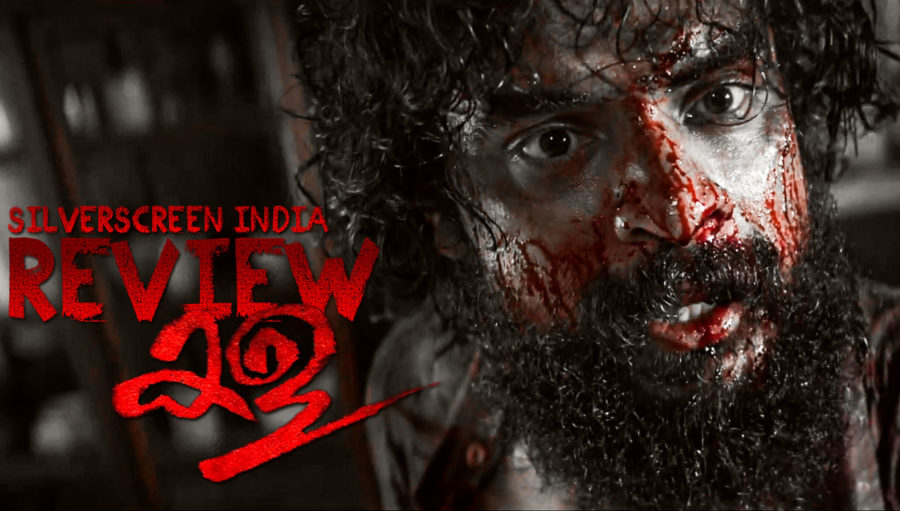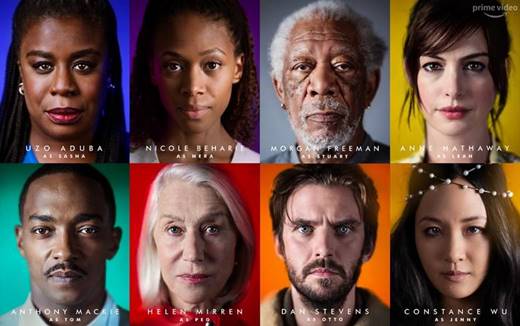Director Rohith VS, in his third directorial, Kala (Weed), uses a lot of quick cuts, shots of blood in varying shades of red, and haunting music to narrate a story about two single-minded young men fighting it out in a sprawling estate. Despite the filmmaker’s efforts to pump meaning into the lavishly picturised blood-spill, Kala cannot mask its shallowness.
Shaji (Tovino Thomas), the scion of a wealthy Christian family in Central Kerala, kills the pet dog of a tribal arrack brewer (Moor) while trying to chase away a pack of wild boar from his plantation. Aggrieved, the latter travels to Shaji’s family house to avenge the death of his canine companion. On a day that Shaji’s family members are out, the two men go about wrestling, hitting each other using weapons that range from an axe to the stem of a thorny bush and hurling country bombs at each other in the wilderness.
There are some striking parallels between the clash at the centre of Kala and the one in Sachy’s Ayyappanum Koshiyum (2020). The characters come from contrasting social backgrounds. One is the representative of the exploited and the other, a beneficiary of centuries of exploitation. The nameless young man is a forest-dweller. His love for his dog is primal; it must hark back to the days human beings were hunter-gatherers. Shaji, on the other hand, is a quintessential brat living in the shadow of his landowner father (Lal). The weed who would destroy the farm. His greatest assets are his gym-perfect body and a conceit that stems from his pedigree.
The film’s attempt at making a social commentary is preposterous and half-hearted. In its final sequence, the young man whose inclination to violence makes him not very different from Shaji, is elevated to semi-divinity. In a shot during the fight where he is rising from the ground, the background score turns spiritual, hinting that he might be no ordinary man.
Strange enough, all the characters in Kala seem to be acutely aware of the genre of the film. Their slightest movements seem rehearsed. When they stare, they stare long and intense enough for a dramatic impact. The writing is feeble. The characters hardly come across as multi-dimensional because their personality drowns in unnecessary close-up shots and a loud background score. Every character is chained to their gender and social identity. Vidya (Divya Pillai), the immensely kind and perfect woman Shaji is married to, represents purity. Throughout its first half, the film tries to trick the audience into assuming a senior farmhand as an evil man. You get slow-motion close-up shots of his face juxtaposed against visuals of an angry Theyyam figure. The forest dweller has the morals and the agility of a primitive man.
A major weakness in the film is the affinity for hip-hop montage cuts. When used in a good sense, this powerful cinematic tool can build tension or distort the viewer’s understanding of time. Here, it is used in a wild excess. In the film’s opening sequence that showcases an ordinary day in Shaji’s middle-class household, every mundane activity and movement is underlined using quick cuts and a seemingly endless background score. There is no descent into chaos; right from the first scene, chaos is the narrative’s primary nature.
There is so much in the vast landscape of world cinema for an aspiring filmmaker to choose and replicate. In mainstream cinema space, where the quality of replication is often valued more than a quest for novelty, the challenge is to know why and where to apply borrowed techniques and to what extent. Kala’s inability to differentiate between significant and trifle could wear you out. Rohith treats the images of a dog barking at a squirrel and a domestic help locating a cobweb on a window sill in the same way as he films a fateful moment where a hunter spots his prey cowering in the corner of a room.
But Rohith does have his positives: He has a talent for capturing the essence of geographical space, a quality that can be seen in his directorial debut Adventures Of Omanakkuttan. In Kala, he and his cinematographer (Akhil George) make a thorough study of the specifics of the estate and the house. They create a dark, dingy and eerie atmosphere to place the action setpiece in the second half. The mood spreads to the couple’s bedroom as well, lending the erotic scene a tinge of foreboding.
Recommended
There is an excess of violent images in Kala. Blood, a stylistic element here, is splashed across the screen now and then. Men suffer fatal wounds on their body, yet they continue to fight, scream, roll in the mud.
But is this unbridled portrayal of violence worth a medal? Not really. Men harming each other for greed, lust or reasons as weak as in this case is a theme that has occupied mainstream cinema since its inception. Kala has slick action scenes, an unflinching depiction of blood and a rebellious anti-hero figure but it produces nearly the same emotional impact as a story about a high-school rivalry.
*****
The Kala review is a Silverscreen original article. It was not paid for or commissioned by anyone associated with the film. Silverscreenindia.com and its writers do not have any commercial relationship with movies that are reviewed on the site.



